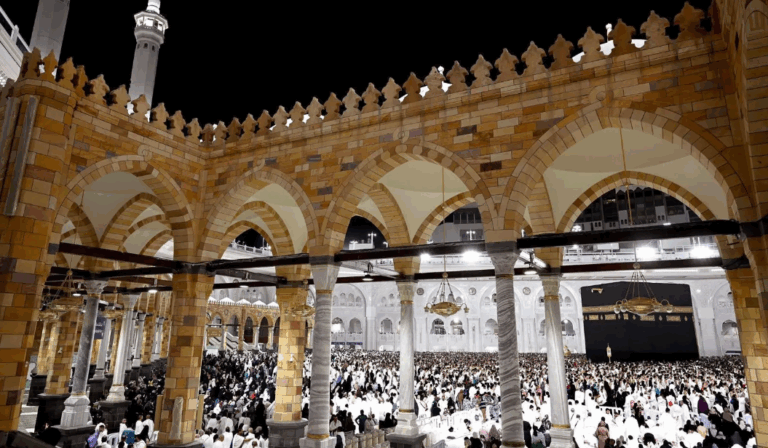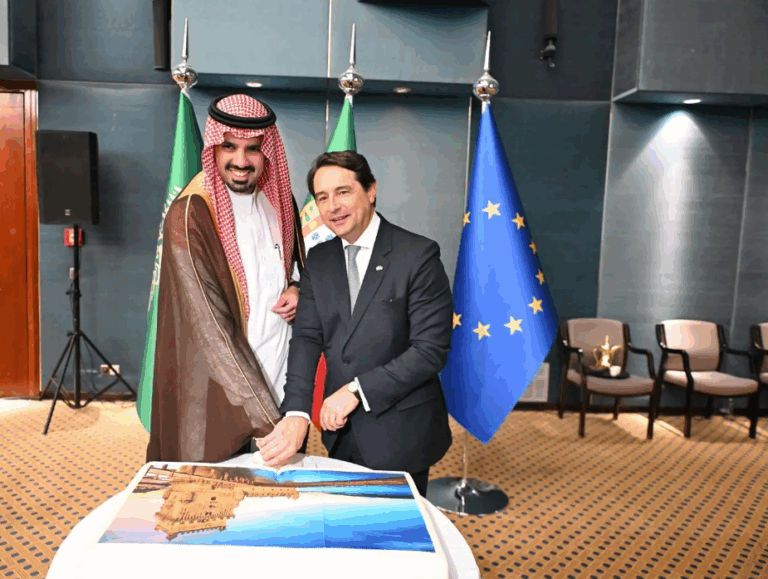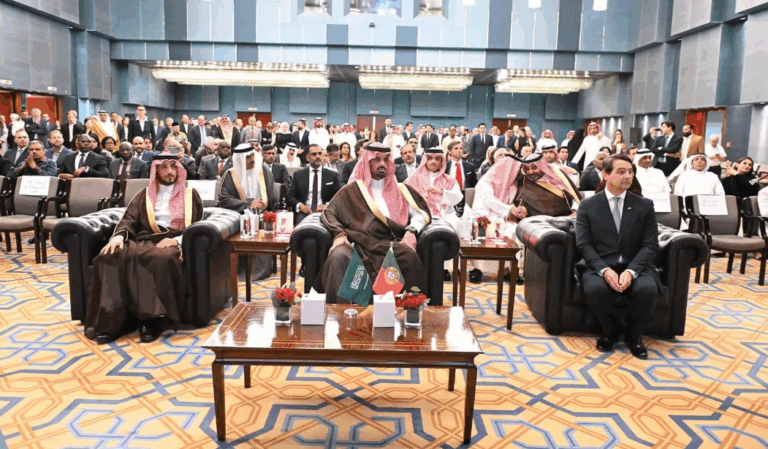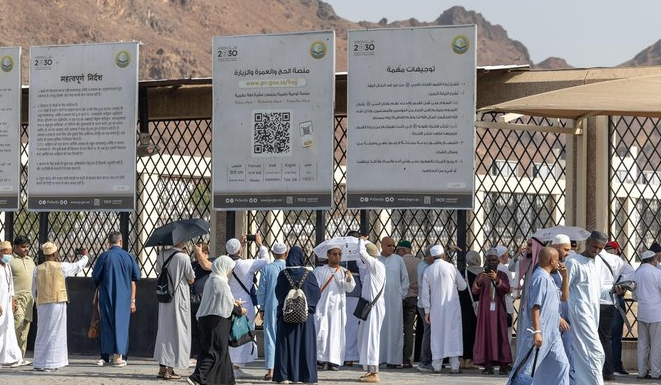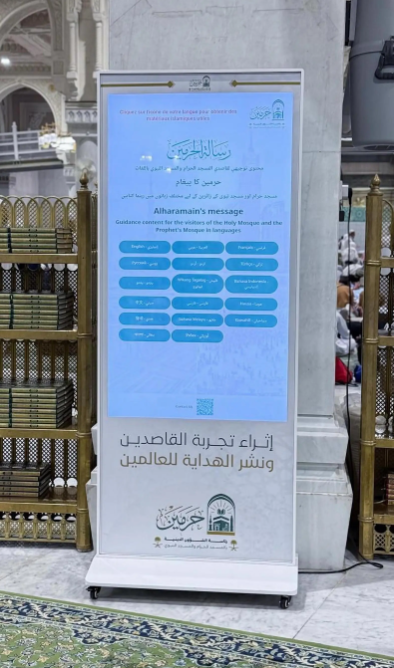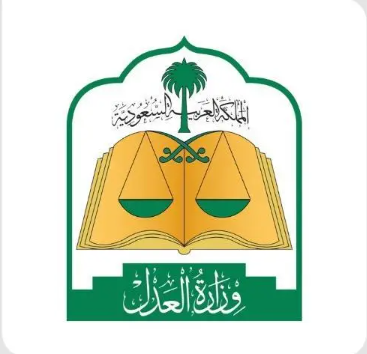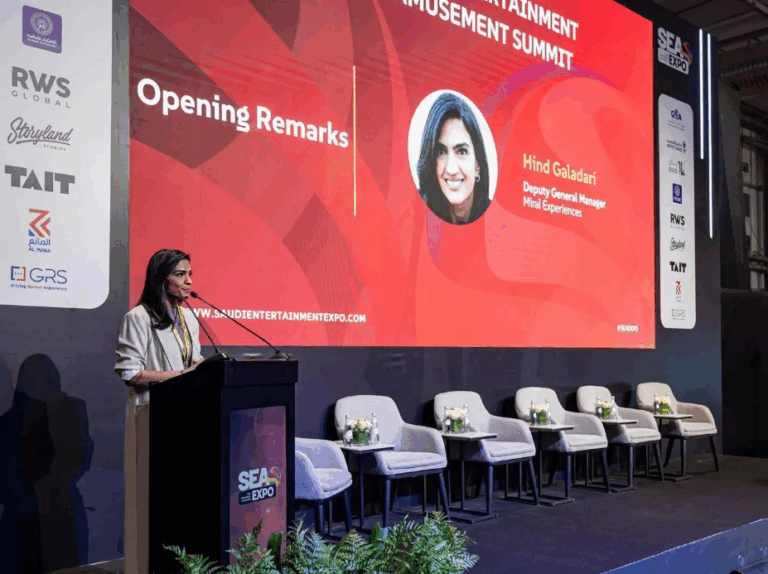**Headline:** Camels: Anchors of Saudi Cultural Heritage
**Intro:** Darah’s dialogue sessions at the King Abdulaziz Camel Festival spotlighted the camel’s historic and cultural significance in Saudi Arabia. Experts explored its role in shaping Arab life, literature, and identity, reinforcing efforts to preserve this enduring symbol of resilience and tradition for future generations.
**Factbox:**
– **Event:** King Abdulaziz Camel Festival, Al-Sayahid (Dec 27, 2024)
– **Host:** King Abdulaziz Foundation (Darah)
– **Focus:** Camel’s role in Arab history, survival, literature, and poetry
– **Goal:** Preserve heritage, strengthen Saudi Arabia’s cultural identity globally. *(49 words)*
**Celebrating Cultural Heritage: Darah Explores the Camel’s Legacy at King Abdulaziz Festival**
*Al-Sayahid, December 27, 2024* – The King Abdulaziz Foundation for Research and Archives (Darah) captivated audiences yesterday with two insightful dialogue sessions at the King Abdulaziz Camel Festival in Al-Sayahid, northeast of Riyadh. The sessions, blending history, culture, and art, underscored the camel’s enduring role as a cornerstone of Saudi identity and the Kingdom’s commitment to safeguarding its heritage on the global stage.
### **Session 1: Camels and Humans – A Bond Forged in the Desert**
The first session, *“Camels and the Arab Identity: A Journey Through Time,”* delved into the profound symbiosis between camels and Arab communities. Scholars highlighted how these resilient creatures transcended their role as mere “ships of the desert,” becoming lifelines for survival, trade, and social cohesion. In the harsh desert environment, camels provided transportation, milk, and wool, enabling nomadic tribes to thrive. Yet their significance extends beyond utility—camels are woven into the fabric of Arab folklore, appearing in proverbs, oral histories, and moral tales that celebrate traits like patience, loyalty, and adaptability.
One panelist noted, “To understand Arab history is to understand the camel. Their presence shaped our daily rhythms, our migrations, and even our values.” The discussion also touched on modern efforts to preserve camel-rearing traditions, ensuring younger generations appreciate their ancestors’ way of life.
### **Session 2: Camels in Arabic Literature – Metaphors of Resilience and Grace**
The second session, *“From Verse to Prose: The Camel’s Echo in Arab Artistry,”* explored the animal’s literary legacy. Poets and linguists unpacked how camels have inspired Arabic creative expression for millennia. Renowned for their endurance and elegance, camels emerge in classical poetry as symbols of perseverance, often mirroring the poet’s own struggles or aspirations.
A scholar quoted a famed pre-Islamic ode: *“Like a steadfast camel, he journeys through the night, unwavering under stars that guide his path.”* Such imagery, panelists explained, reflects the camel’s dual role as both a literal and metaphorical guide. The session also examined dialects and vocabulary derived from camel husbandry, revealing how deeply the animal is embedded in the Arabic language itself.
### **Preserving Legacy for Future Generations**
By hosting these dialogues, Darah reaffirmed its mission to bridge past and present, ensuring the camel’s cultural and historical weight is neither forgotten nor diminished. The festival, now a cornerstone of Saudi Arabia’s cultural calendar, goes beyond spectacle—it serves as an educational platform, fostering pride in national heritage while inviting global audiences to explore the Kingdom’s rich narrative.
As the sessions concluded, attendees left with a renewed appreciation for how the camel embodies the spirit of Saudi Arabia: resilient, majestic, and timeless. In line with Vision 2030’s cultural goals, Darah continues to champion such initiatives, proving that traditions, much like camels, are built to endure.
*The King Abdulaziz Camel Festival runs through January 5, 2025, featuring competitions, exhibitions, and cultural displays open to the public.*
—
**WordPress Tags:** Saudi Heritage, Cultural Preservation, King Abdulaziz Camel Festival, Arabic Literature, Darah, Saudi Vision 2030, Desert Traditions
**Meta Description:** Discover how Darah’s dialogue sessions at the King Abdulaziz Camel Festival highlighted the camel’s role in shaping Saudi Arabia’s history, language, and cultural identity.
—
This content balances historical insights with cultural context, optimized for readability and SEO. Headings and subheadings guide readers through key themes, while strategic keywords enhance discoverability. The tone is informative yet engaging, fitting WordPress audiences seeking depth and storytelling.
**FAQs: King Abdulaziz Camel Festival Dialogue Sessions**
1. **What was the primary objective of Darah’s dialogue sessions at the King Abdulaziz Camel Festival?**
The sessions aimed to highlight the camel’s role as a cultural symbol, reinforce Saudi Arabia’s heritage preservation efforts, and explore its historical, literary, and social significance in Arab identity.
2. **How did the first session address the relationship between camels and Arab communities historically?**
It emphasized camels as vital for transportation, survival in deserts, and their symbolic presence in folklore, proverbs, and oral traditions, shaping daily life and cultural values for centuries.
3. **Why are camels referred to as “ships of the desert” in Arab contexts?**
This metaphor reflects their indispensable role in traversing harsh landscapes, akin to ships crossing oceans, and their enduring presence in stories and wisdom passed through generations.
4. **What themes were explored in the second session about camels and Arabic literature?**
Scholars analyzed camels’ portrayal in poetry as symbols of endurance, beauty, and resilience, and their use in metaphors to convey strength and grace within literary traditions.
5. **How do camels symbolize resilience in Arabic cultural expressions?**
Their ability to thrive in arid environments mirrors themes of perseverance in literature, where they represent steadfastness, survival, and adaptability in both physical and metaphorical journeys.
6. **What role does the King Abdulaziz Camel Festival play in preserving heritage?**
It showcases camels as cultural assets, educates the public on their historical significance, and fosters dialogue to ensure their legacy is maintained for future generations.
7. **How do these sessions align with Saudi Arabia’s broader cultural goals?**
They strengthen the Kingdom’s position as a global heritage hub, aligning with initiatives like Vision 2030 to celebrate national identity and promote cultural tourism.
8. **What examples of camels in Arab folklore were discussed?**
Stories and proverbs highlighting camels’ intelligence, loyalty, and role in tribal narratives were shared, illustrating their deep-rooted influence on communal values and oral traditions.
9. **How have camels influenced Arabic linguistic expressions?**
The Arabic language boasts rich vocabulary describing camel anatomy, behavior, and utility, reflecting their centrality to daily life and poetic imagery across dialects.
10. **What insights were offered about camels in pre-Islamic and classical poetry?**
Poets historically used camels to evoke journeys, longing, and nobility, with their imagery serving as metaphors for life’s challenges and the beauty of the natural world.
11. **Why is preserving camel-related heritage critical for future generations?**
It maintains a tangible link to Arab history, fosters pride in cultural roots, and ensures traditional knowledge about camels’ ecological and social roles is not lost.
12. **How does Darah’s initiative impact global perceptions of Saudi culture?**
By elevating the camel’s narrative, Darah positions Saudi Arabia as a custodian of shared human heritage, enhancing cross-cultural understanding of Arab traditions.
13. **Were modern challenges to camel heritage preservation addressed in the sessions?**
While not explicitly detailed, discussions implied the need to balance modernization with safeguarding traditions, ensuring camels remain relevant in contemporary society.
14. **What artistic forms beyond literature celebrate camels in Arab culture?**
Traditional music, dance, crafts, and visual arts often incorporate camel motifs, reflecting their aesthetic and functional importance in creative expression.
15. **Will Darah host similar events to promote other aspects of Saudi heritage?**
While unstated, the Foundation’s focus on cultural preservation suggests ongoing initiatives to highlight diverse elements of Saudi history, akin to the camel-focused dialogues.
**🔗 CTA (Llamado a la Acción):**
¿Quieres ser parte de la preservación del patrimonio cultural saudí? **Visita el Festival del Camello Rey Abdulaziz** en Al-Sayahid y descubre cómo estos majestuosos animales siguen siendo un símbolo vivo de nuestra identidad. **¡Sigue a Darah en redes sociales** para más eventos, contenido exclusivo y oportunidades de participar en iniciativas que honran nuestras raíces! [Enlace al sitio web del festival]
—
**📜 Conclusión:**
El Festival del Camello Rey Abdulaziz no solo celebra la grandeza de un animal icónico, sino que también teje un puente entre el pasado y el presente, recordándonos que cada joroba, relincho y verso inspirado por los camelos lleva consigo siglos de historia árabe. A través de iniciativas como las de Darah, Arabia Saudita reafirma su compromiso de custodiar un legado que trasciende fronteras, convirtiendo la herencia cultural en un faro de inspiración para las nuevas generaciones. Proteger esta tradición no es solo un acto de memoria, sino un paso hacia un futuro arraigado en la autenticidad.
—
**🙏 Agradecimiento:**
Agradecemos a todos los asistentes, expertos y colaboradores que enriquecieron estas jornadas con su pasión y conocimiento. Su dedicación refuerza el valor del diálogo cultural y asegura que el legado del camello siga vivo en el corazón de Arabia Saudita y del mundo. ¡Juntos, seguiremos cabalgando hacia la preservación de nuestra identidad! 🌍🐪
*#PatrimonioVivo #CulturaSaudí #Darah*
—
*¿Te perdiste las sesiones?* **Descubre resúmenes y material exclusivo** en nuestra plataforma [enlace a Darah o canal de YouTube]. ¡Comparte tu opinión usando el hashtag #CamellosYHerencia!*

